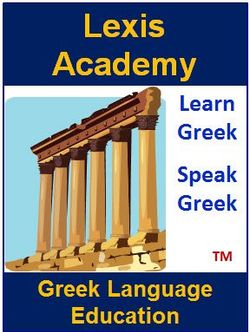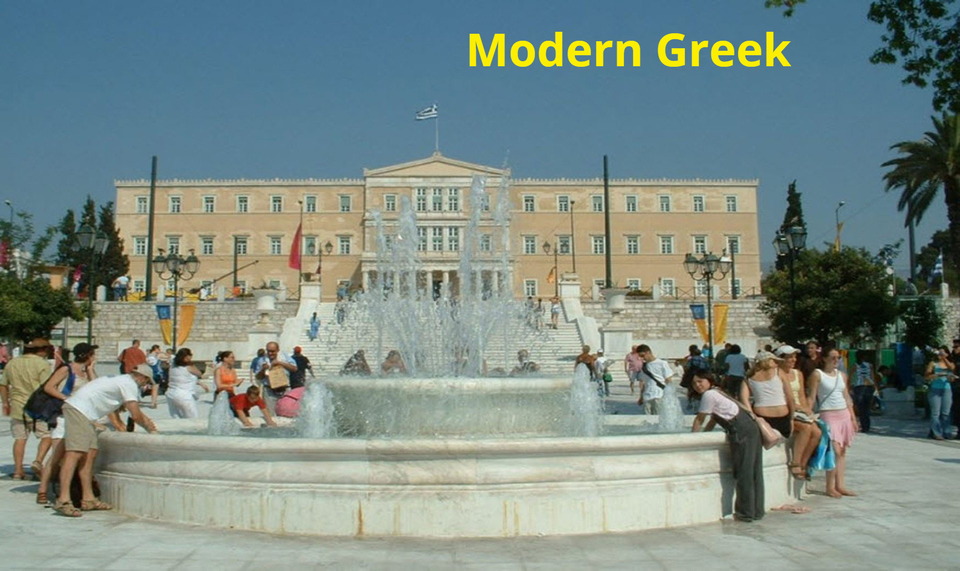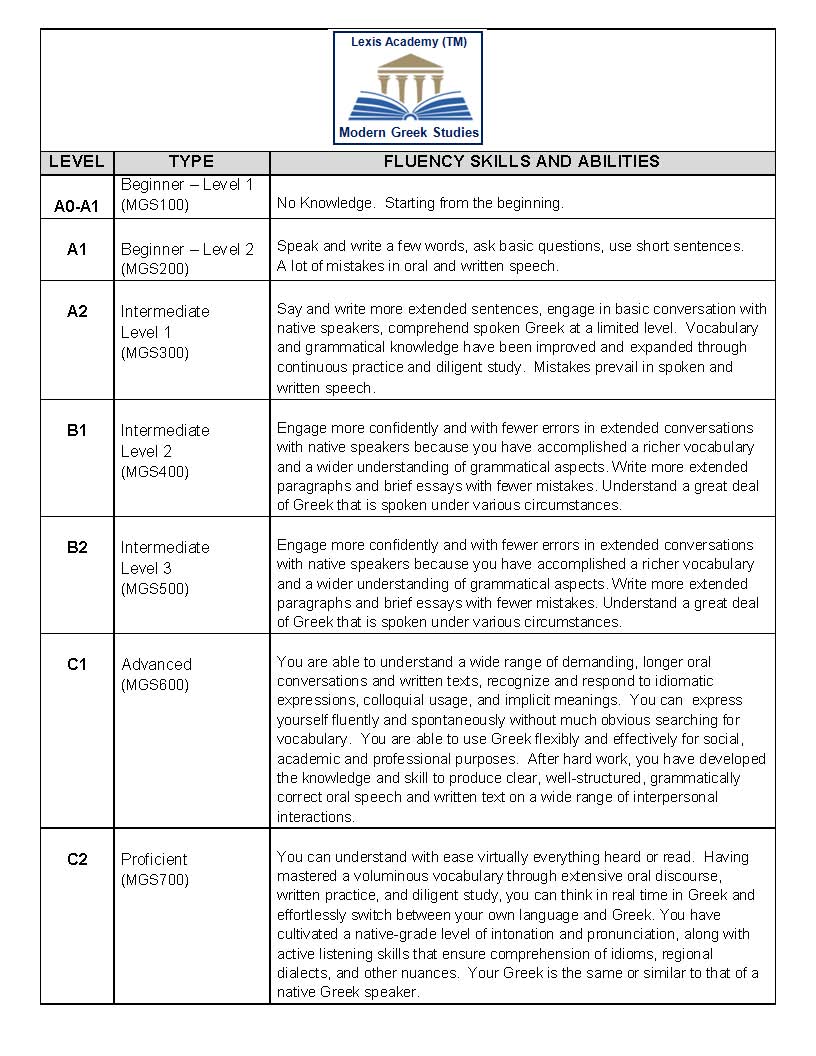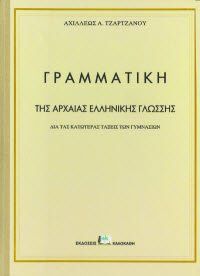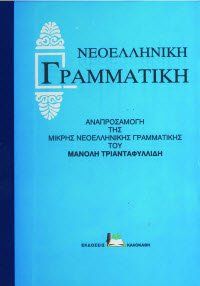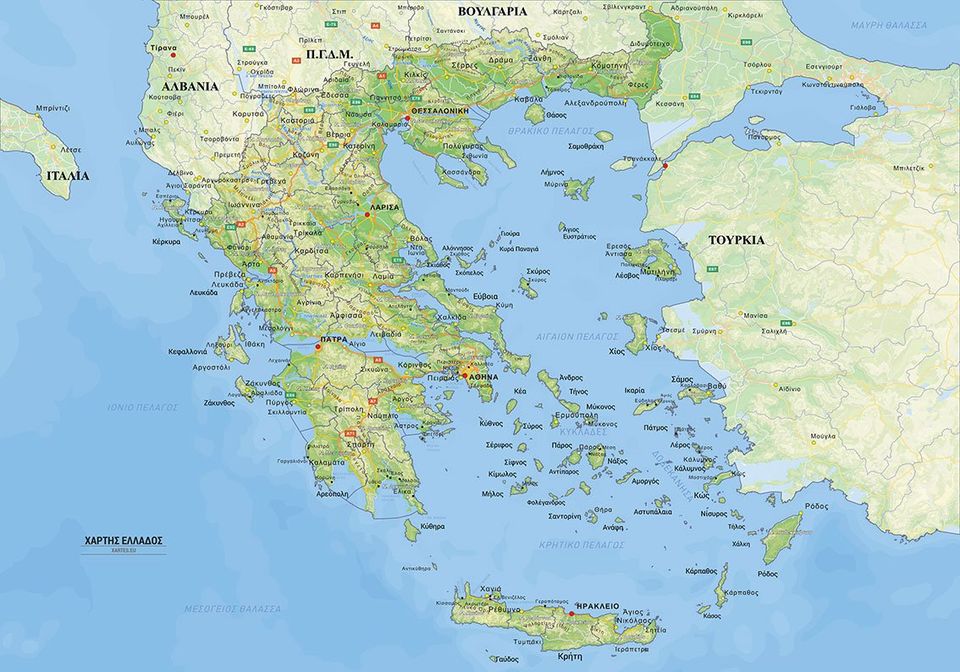Modern Greek Studies
PROGRAM OVERVIEW
The objective of the Modern Greek Language Studies program is to provide Greek Language Learners with the body of knowledge and fluency skills required to read, write, listen, and speak Standard Modern Greek.
During each course, at a progressively increasing level of fluency development that is achieved through structured practice and extensive drills, students build the language acquisition skills required to read, write, listen, understand, and speak Modern Greek as it is spoken by native Greek speakers.
Based on personal needs and the outcomes of placement tests, adult Greek Language Learners have the opportunity to enroll in the following beginner, intermediate, and advanced courses that are designed to take the learner from the very basic vocabulary to complete mastery of authentic Modern Greek:
MGS100: Modern Greek Beginner Level 1 (A1)
MGS200: Modern Greek Beginner Level 2 (A1)
MGS300: Modern Greek Intermediate Level 1 (A2)
MGS400: Modern Greek Intermediate Level 2 (B1)
MGS500: Modern Greek Intermediate Level 3 (B2)
MGS600: Modern Greek Advanced (C1)
MGS700: Modern Greek Proficient (C2)
Most students typically enter the program by starting at Beginner Level 1.
Example topics of instruction and learning objectives at the Beginner level include:
• Reading and writing the alphabet correctly in authentic Greek.
• Learning how to use cases, numbers, and genders for declinable words.
• Creating sentences with masculine, feminine, and neuter nouns and adjectives.
• Building native-level vocabulary through reading, speaking, listening and translation drills.
• Understanding, conjugating, and using the auxiliary verbs έχω and είμαι.
• Using definite articles: o, η and то; indefinite articles: ένας, μία and ένα;
• Constructing basic sentences using a structured Subject-Verb-Object approach.
• Using numbers to tell time, describe dates, give phone numbers, and buy things.
• Expressing wishes, describing situations, giving instructions and commands
• Responding orally to questions related to everyday situations and designated readings.
• Using selected verbs in all persons, numbers, tenses, voices, and moods.
• Using nouns, adjectives, pronouns, and adverbs in all cases, genders, and numbers.
• Applying prepositions and phrasal verbs to express movement, possession, and other actions.
COURSE OBJECTIVES AND LEARNING OUTCOMES
Instructional objectives and learning outcomes at each course level are summarized below.
These fluency-building levels are based on the Common European Framework of Reference for Languages (CEFR or CEF) that defines teaching, learning, and assessment processes in Second Language Acquisition.
The Classical Period
The classical period, from Homer to Aristotle (1000 BC-322 BC) is characterized by various dialects of Greek. Old Ionic or Doric was the language spoken by Homer and Hesiod in Achea) and Ionic was spoken by Herodotus and Hippocrates in Asia Minor. Thessaly, Epirus, Lesbos, and other areas had their own dialects as well. However, Attic Greek developed into a robust language with a complex structure and more appealing phonology.
As a result, Attic Greek became the dominant dialect that permeated Athens and far beyond. It was the language of learned men and women, philosophers, scientists, poets and tragedians of the day, such as Hypatia of Alexandria, Themistoclea of Delphi, Aristotle, Plato, Thucydides, Xenophon, Aeschylus, Sophocles, and Euripides.
Hellenistic and Byzantine Periods
The Hellenistic period, from Alexander the Great to Emperor Justinian (322 BC – 529 AD) is noted for the diffusion of Greek into all areas conquered by Alexander the Great.
The need to communicate with local populations was one of the reasons that led to the simplification of Attic Greek into Koine or Common Greek. As Koine spread, it became the language of the New Testament and patristic writings.
The Byzantine period, from Emperor Justinian to the Fall of Constantinople (529 AD – 1453 AD) saw the establishment of Greek as the official language of the Byzantine Empire.
And, scholars continued to work on further simplifying Koine Greek
Modern Period
The modern period is dated from 1453 to the present. Greek today has changed since ancient times but not as much as other European languages. Some of the changes include:
** A simplified noun-system where the dative case has been absorbed into the genitive in Standard Greek, and into the accusative in Macedonia and Thrace).
** In the verb system, infinitives have been replaced with a subjunctive construction.
** Loss of the optative mood and the dual number.
** In Koine Greek, some verbs ending –μι have been replaced with regular –αω or –ω endings.
** In Koine Greek, a wider use of: ἵνα clauses, μή clauses, along with δέ, καί conjunctions.
With the exception of a few words that have been lost, the vocabulary of Modern Greek is essentially that of Hellenistic times with enduring influence from Classical Greek.
The Language Controversy
The London Protocol that was signed on February 3, 1830 declared Greece an independent
state. A key issue that confronted the new nation was the formal written language that should be adopted in education and government. Should it be Ancient Greek or Demotic Greek, the people’s language (i.e. Vernacular, Modern Greek)? Adamantios Koraes, a leading figure in the formation of the new state, argued that Modern Greek needed to be cleaned and purified from non-Greek words and phrases. A third form, Katharevousa, or Purist Greek, a mixture of Ancient Greek, Medieval Greek and Demotic Greek, was created and established as the official written language of Greece, even though Demotic was spoken by the majority of Greeks.
For the next two centuries, the diglossia continued to polarize the country between those who could speak Katharevousa and those who could not, with disastrous results in all facets of life, including education, communication, literary authors, the economy, religion, and politics, often leading to violent upheavals and destructive demonstrations. Between 1834 and 1976, Katharevousa and Demotic replaced one another by public law at least ten times. The issue was finally settled in 1976, when Demotic or Modern Greek (Νέα Ελληνικά, Νεοελληνικά) was established as the official written and spoken language of Greece. One more necessary change came in 1982, when the monotonic system formally replaced the polytonic system of accentuation.
How Many People Speak Greek?
Worldmapper.org estimates that Greek is spoken as a first language by just over 12 million people in at least 31 territories. Outside of Greece and Cyprus, the largest populations are in the United States, Germany, Australia (many in Melbourne), the United Kingdom and Canada. Other smaller populations are spread throughout Europe, neighboring countries, and the Middle East.
Greek is one of the oldest languages in the world. The earliest example of written Greek has been discovered on Linear B tablets dating from the Early Mycenaean period, around the 13th century BC.
Notes from the Living History of Greece
Key periods in the history of Greek civilization include:
Neolithic Greece:
Covering a period beginning with the establishment of agricultural societies in 7000 BC and ending in c. 3200 – c. 3100 BC.
Helladic (Minoan or Bronze Age):
Chronology covering a period beginning with the transition to a metal-based economy in 3200/3100 BC to the rise and fall of the Mycenaean Greek palaces spanning roughly five centuries (1600–1100 BC).
Ancient Greece:
Covering a period from the fall of the Mycenaean civilization in 1100 BC to 146 BC spanning multiple sub-periods including the Greek Dark Ages (or Iron Age, Homeric Age), Archaic period, the Classical period and the Hellenistic period.
Roman Greece:
Covering a period from the Roman conquest of Greece in 146 BC to 324 AD.
Byzantine Greece:
Covering a period from the establishment of the capital city of Byzantium, Constantinople, in 324 AD until the fall of Constantinople in 1453 AD. Many historians consider the establishment of Byzantium and thereafter Constaninople as the beginning of Modern Greece.
Frankish/Latin Greece:
Covering a period of the Venetian possessions and the Fourth Crusade (1204) to 1797, year of disestablishment of the Venetian Republic.
Ottoman Greece:
Covering a period from 1453 up until the Greek Revolution of 1821,
Modern Greece:
Covering a period from 1821 to present.
At its cultural and geographical peak, Greek civilization spread from Egypt and the Middle East all the way to the Hindu Kush mountains in Afghanistan. Since then, Greek minorities have remained in former Greek territories (e.g. Turkey, Albania, Italy, Libya, Levant, Armenia, Georgia) and Greek emigrants have assimilated into differing societies across the globe (e.g. North America, Australia, Northern Europe, South Africa). At present, most Greeks live in the modern states of Greece and Cyprus.
